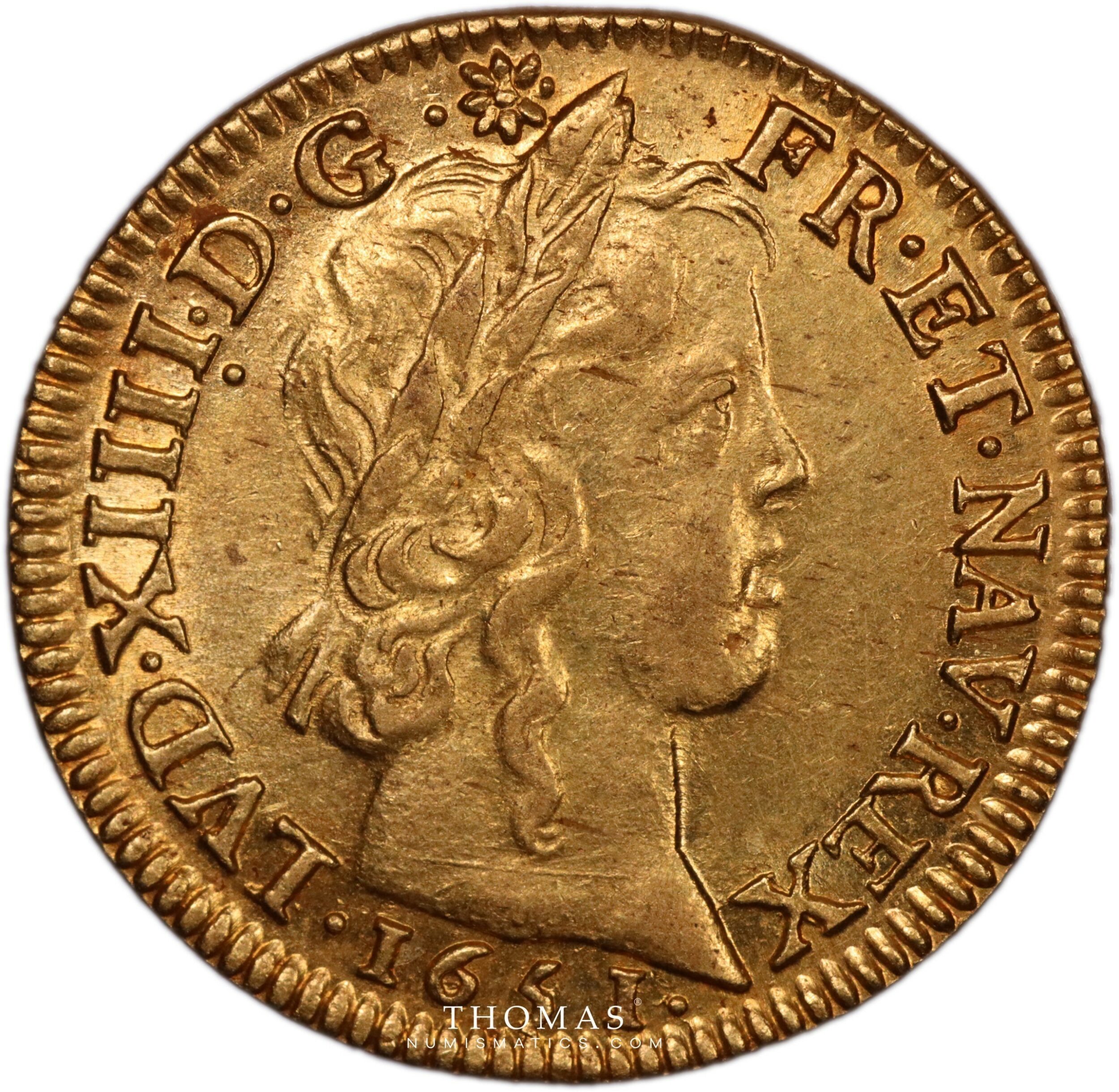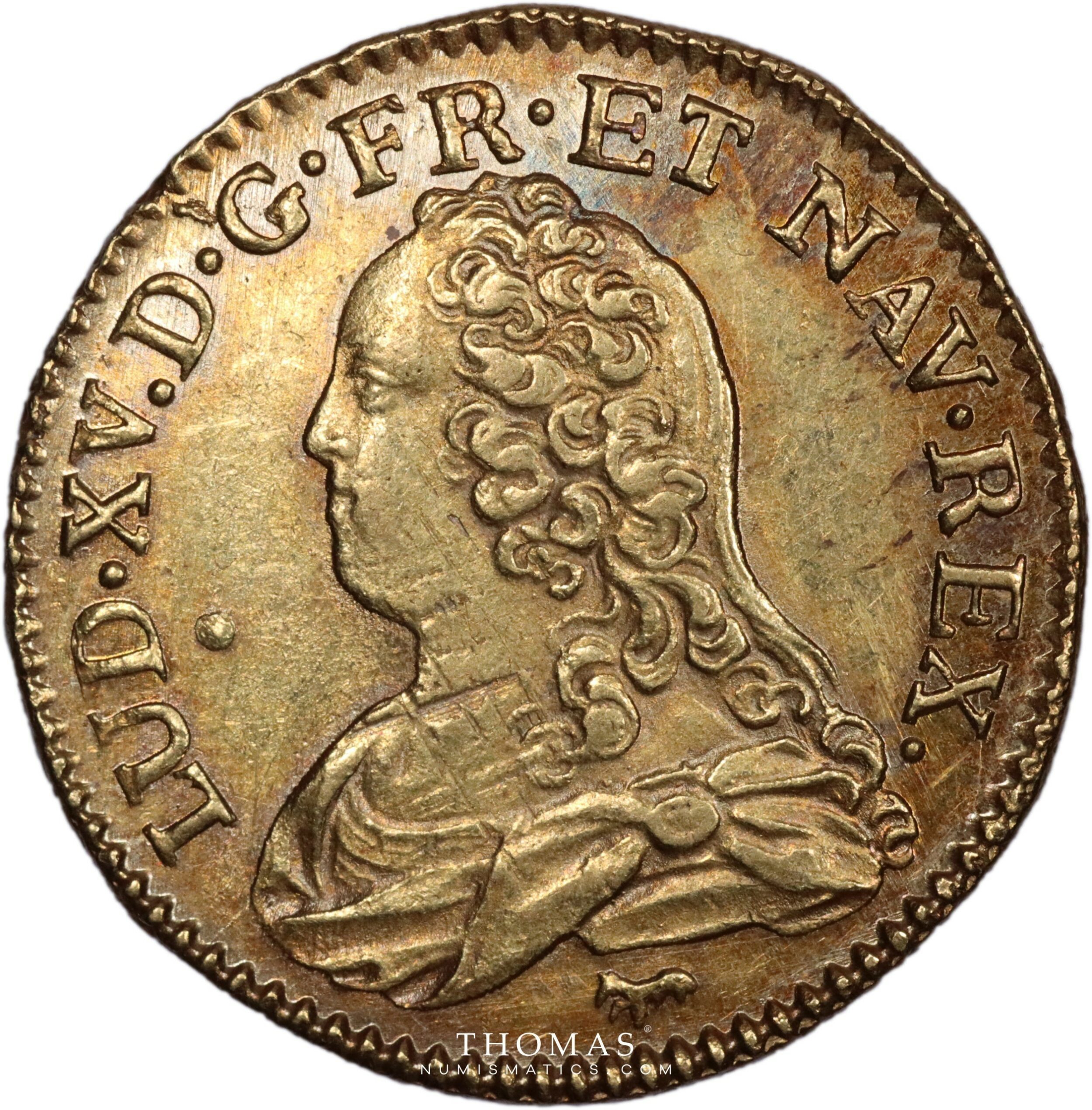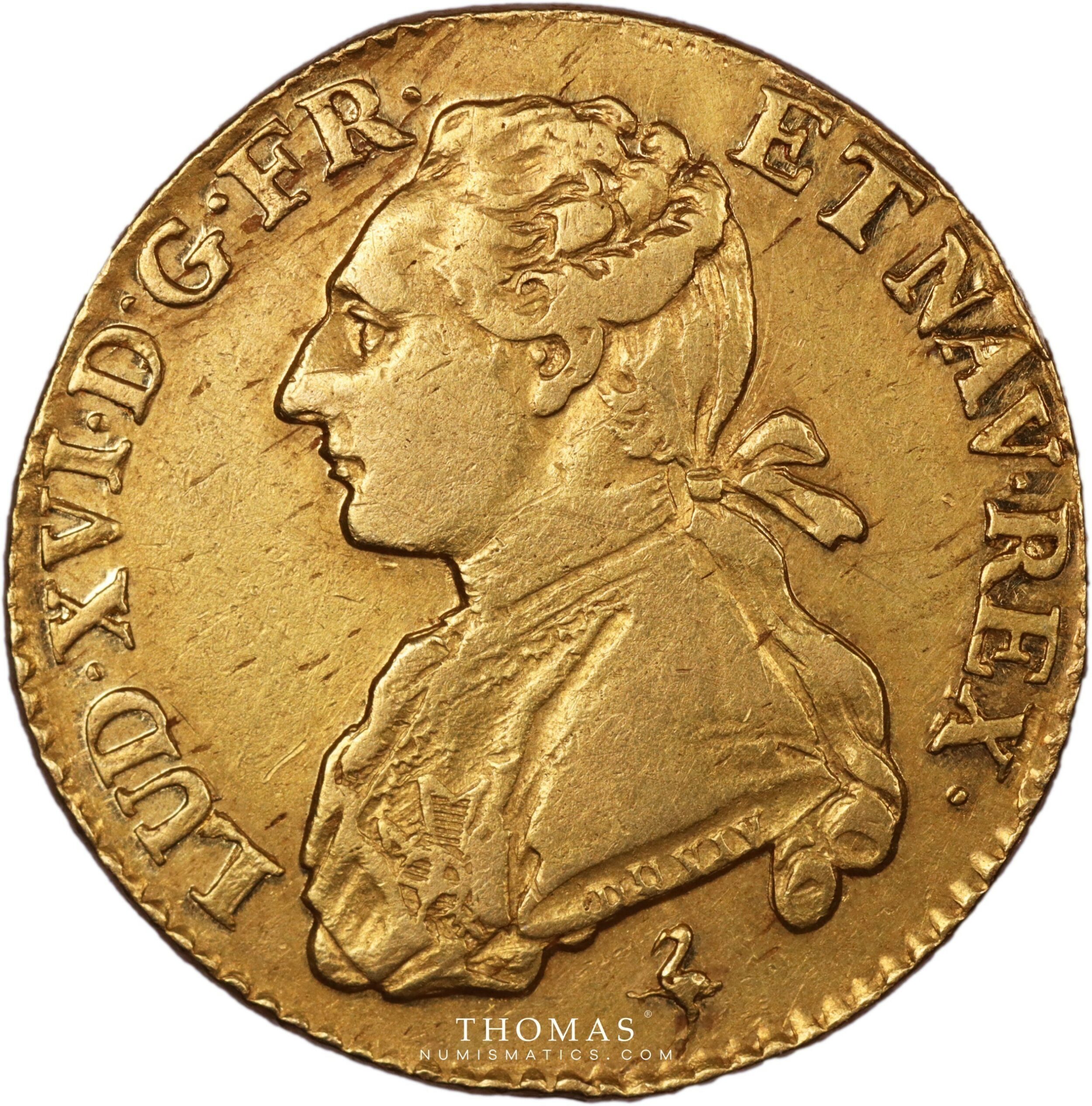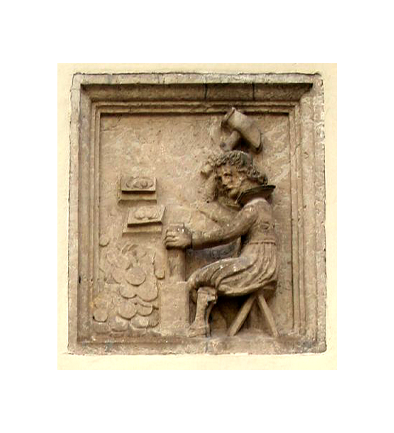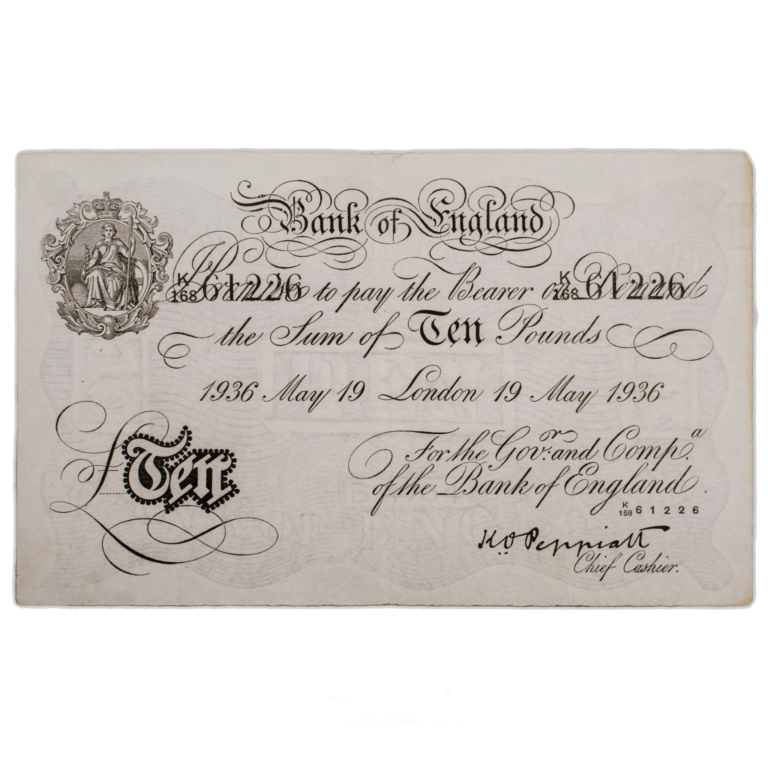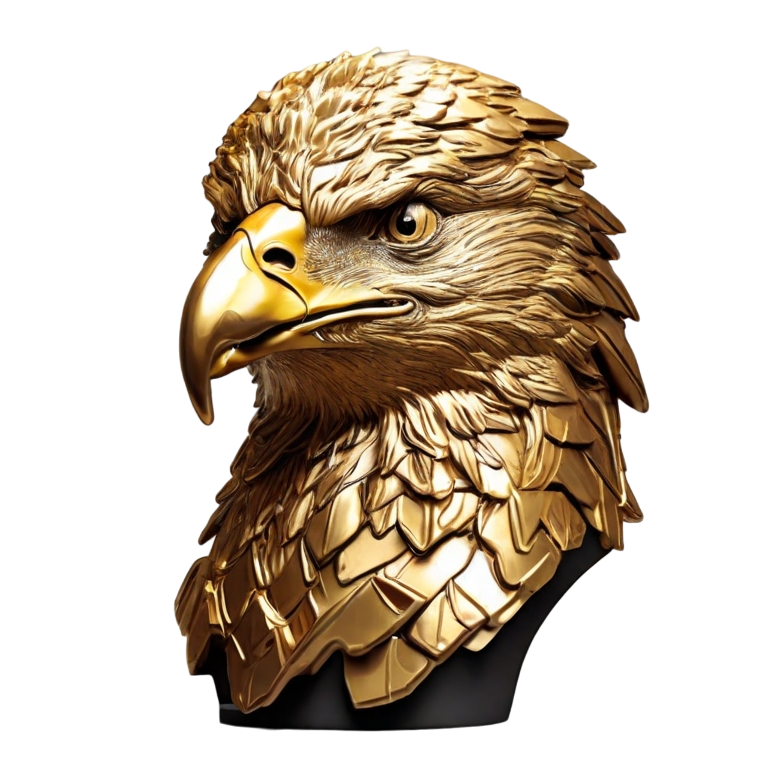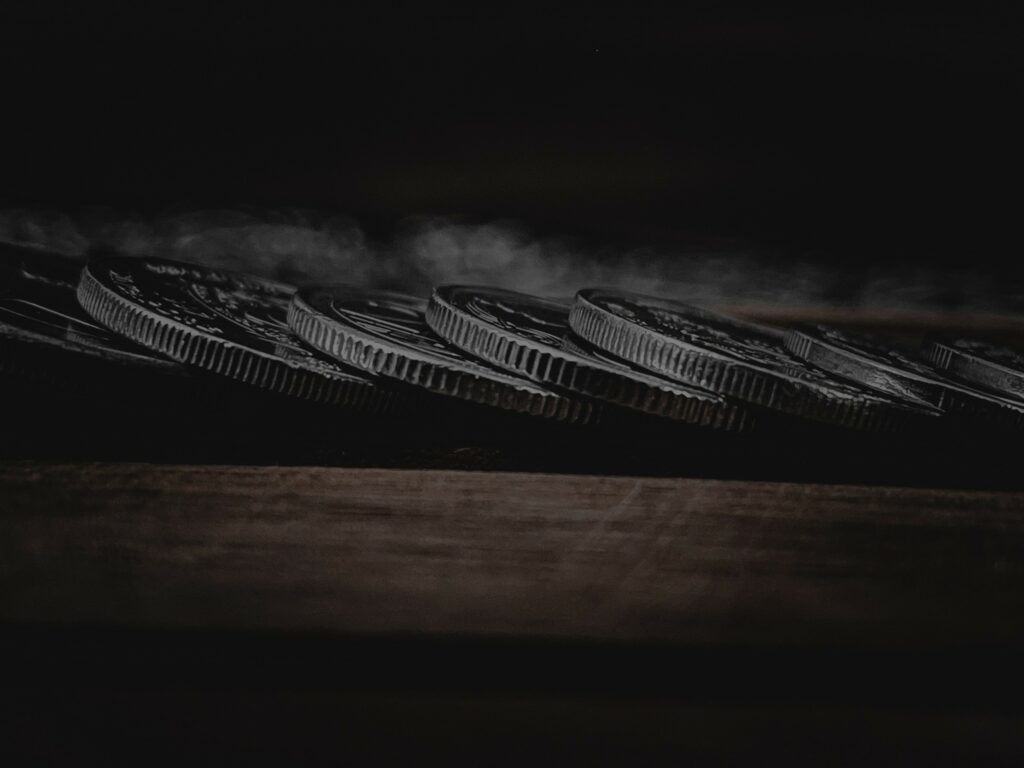
Discover all the news and articles from TNUMIS Magazine exclusively
The Louis d’or coin, object of fascination
The golden Louis coin is mythical. The name of this pre-Revolutionary royal coin is sometimes used in everyday language and assimilated to a renowned treasure. Who has never dreamed of finding a Louis d’or hidden at the back of their garden or in the walls of their house? As a true object of fascination, the Louis d’or is renowned in the world of numismatics and prized by coin collectors around the world.
The creation of the Louis d’or
The Louis d’or was minted from 1640 to 1792. At the time, King Louis XIII, supported by Cardinal Richelieu, led a strong policy to restore power and assert the power of France. The edict of Saint-Germain of March 31, 1640 ratified the creation of a new currency, the Louis d’or, to replace the ecu. Its purpose was to compete and become more competitive with the Spanish and English kingdoms. This currency marks the beginning of a new monetary system, the “louis”, which will mark numismatics forever.
The Louis d’or succeeded, as early as Louis XIII, in imposing themselves thanks to their high gold content. The coin weighs a little less than 4 grams of gold for a mass between 6 and 7 grams. Its diameter is about 25 millimeters.
The kings who succeeded Louis XIII, Louis XIV, Louis XV and Louis XVI will keep this coin by striking it in their effigy. The revolution will sign the end of its striking. In 1792 and 1793, the 24-pound louis, of approximately 7.6 grams, succeeded them. The year 1793 saw the drawing of the bust of the king disappear. From 1803, the Louis d’or were replaced by 20-franc Napoleon gold coins. Those coins were also called “louis” until the First World War, which can sometimes lead to confusion.
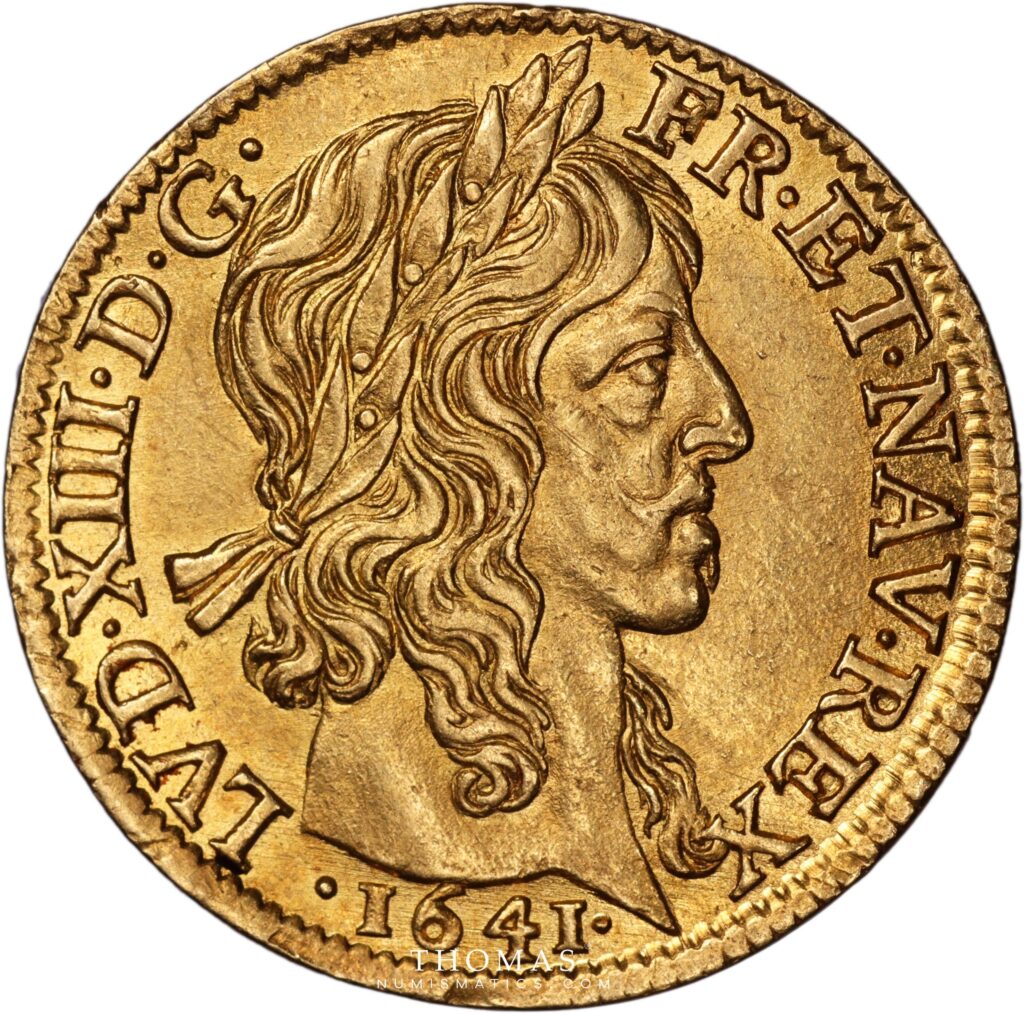
Louis XIII- Louis d’or à la mèche longue 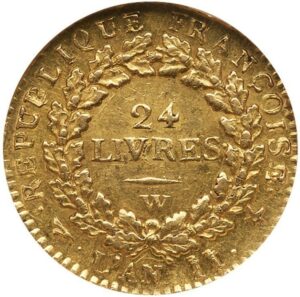
24 Livres en or 1793 A
New York Sale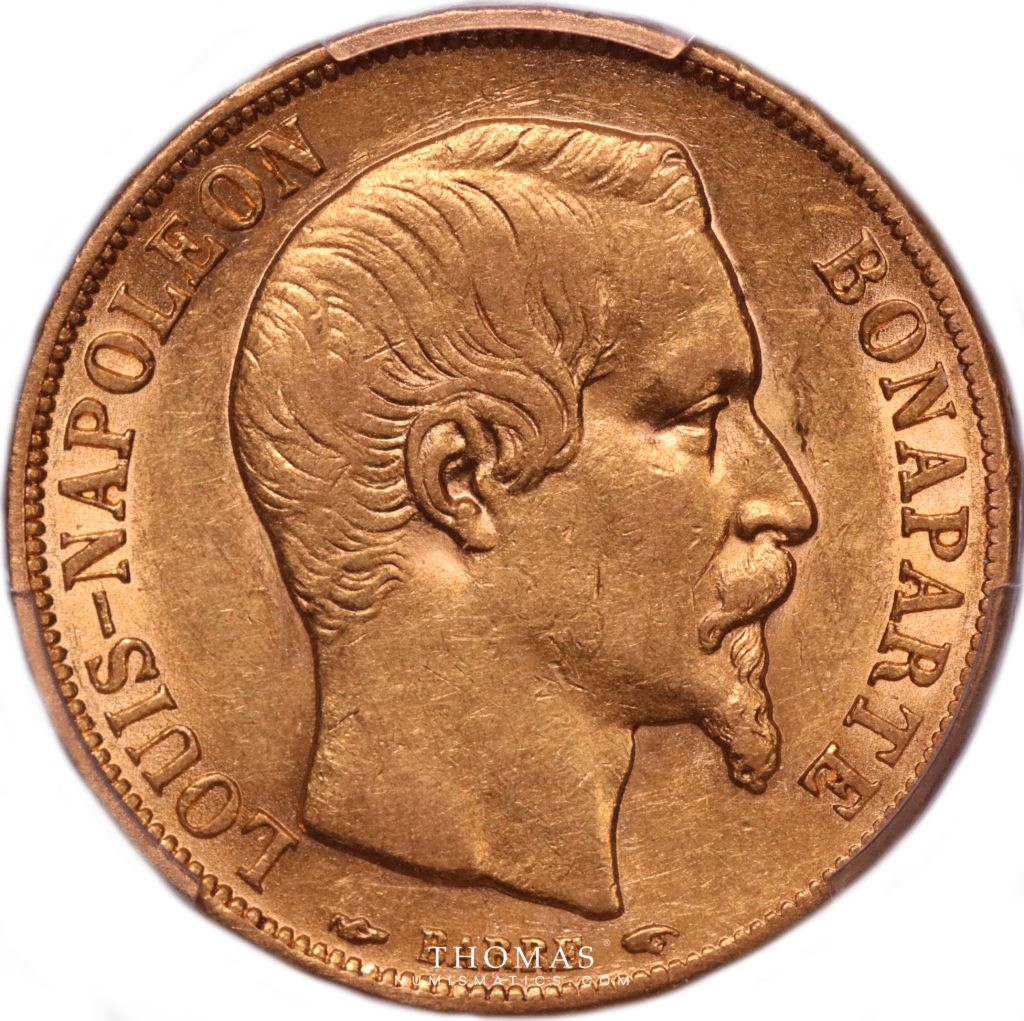
Napoléon III 20 francs or 1852 A
The various royal coins
The Louis d’or was designed by Jean Varin or Warin, a French sculptor and engraver. The coin is also appreciated for its remarkable aesthetics and its regularity. Indeed, while the ecus were until then struck by hand with a hammer, the Louis d’or uses a new technique: the balance strike. It offers a new mastery with a great technical and artistic quality.
The weight of each louis had to conform to the rule. This is the reason why adjustment stripes may be visible on certain coins, in particular on the louis d’or 1788 D (illustration above). This technique consisted of removing metal so that the weight conformed to the official weight.
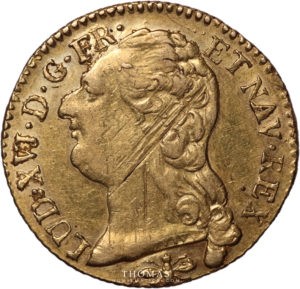
There are mainly 3 types of Louis d’or: the demi-Louis d’or, the Louis d’or and the double Louis d’or. The coins, having the effigy of a king, all bear inscriptions with the name of the reigning King of France. The four kings kept the same currency, from the mid-17th to the late 18th century, being represented in profile to mark their power.
There are differences depending on the kings and periods. The Louis “à la mèche longue”, “à la mèche courte”, “aux lunettes”, “à la tête nue”, etc., are names that designate specific designs and years of minting.
Louis XIV à la mèche longue Louis XV – Louis d’or aux lunettes Louis XVI – Louis d’or aux palmes
The value of a Louis d’or
As a numismatist, you are probably interested in the current value of a Louis d’or. How much can a Louis d’or be sold for? Estimating its value is difficult and it is not possible to set a general price, even indicative, because its value is so random. It is not determined by its weight in gold, but by its numismatic value. The criteria to take into account to estimate a Louis d’or are numerous: its rarity, its quality and condition, its history, its year and issue.
The condition of a coin is crucial to its value. The best one is the “Fleur de Coin” condition. This means that the coin has been very well preserved. It has not circulated and gives the impression that it comes straight from the mint. It should be noted that this state of conservation remains exceptional for coins dating up to the 18th century.
The Louis d’or are among the most sought-after French coins, as they have survived the centuries and have a rich history.
If you wish to have a real Louis d’or appraised, we are numismatists, experts in the study of coins. Contact us to get a reliable appraisal.
Sources :
Sacra Moneta
